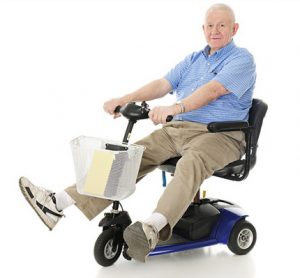For many, mobility scooters are an integral part of their lives. As one of the primary means of getting from A to B, they are essential in keeping many people mobile and encouraging them to get out and about. However, if is is something that you regularly rely upon, maintenance will be required in order to ensure that it is in working order.

Protection
If you have plenty of room inside, it is always best to keep the mobility scooter rental tucked away. To prevent any damage or scratches that may occur due to normal wear and tear, there are storage covers on the market for when your mobility scooter is not in use. These can range in price, from thin covers to a rigid shell.
Cleaning
If find yourself regularly using your mobility scooter, it’s more than likely that you’ll stay on top of your cleaning. However, if not, the process is simple and will only take a couple of minutes out of your day. From travelling along roads, your scooter can sometimes find itself getting a little dusty. Plus, if you use it during bad weather conditions, the body can pick up mud, giving your scooter a dirty appearance. In order to combat this, give it a gentle wash as soon as possible. This way, the paintwork won’t become damaged. If you’re planning on using water, it is important to dry throroughly afterwards to prevent rust.
Batteries
Your battery is the most important part of your mobility scooter. There are a varieties that you could have, so it is essential that you decipher which battery you have when you first receive it. Sealed lead acid or gel based are the most popular, but both will require charging after prolonged periods of time. Charging frequently will keep your scooter in top running order and will prevent further problems down the line.
Regarding their battery life, most will need to be topped up with charge after 8-10 hours. However, if you’re not frequently using yours or the weather is particularly cold, you may need to check the battery before embarking on your journey. Additionally, if you’re not frequently checking these, your battery could begin to decay.
Weather
It is more than likely that you’ll have used your mobility scooter outside when it has been a bit drizzly! There are a number of ways in which you can begin to protect it from the rain, as keeping it dry is essential. Look for a raincoat or a protective cover that neatly fits your scooter in order to keep the rain off. With this in mind, we would recommend keeping your scooter inside whenever possible if the weather begins to take a turn for the worse.
Tyres
Depending on your mobility scooter, you’ll have a set of tyres which are suited best to your needs. With four different varieties, it is vital that they’re checked frequently. If you feel as though your wheels are unsafe and unfit for purpose, you need to begin to look at the process of how to amend this. Your mobility scooters tyres can have a range of different depth treads; the deeper that the tread is, however, the better stablility you will have on the roads. This is beneficial in harsh terrains or adverse weather conditions.
The other three types of tyres are as follows: pneumatic, solid and filled. Pneumatic tyres are easily punctured, as they are filled with air. Occasionally, you can repair a puncture with a patch, although this will have to have been caught early on to prevent further damage. If these begin to deflate, it is important that you replace these as soon as possible. Filled tyres are solid, making them puncture-proof and a perfect low-maintenance option. Solid tyres are created on the same basis as this; however, filled tyres come with shock absorption which makes them softer.

